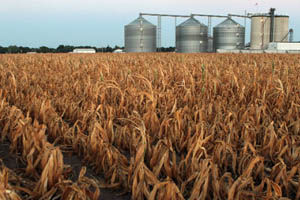How to combat high feed prices

The price of animal feed commodities hit an all-time record high. The price of major ingredients has gone beyond any reasonable expectation.
In the meantime, the most severe drought in half a century has occurred in the US Midwest’s corn and soybean growing region which adversely affects crop production. The United States is the world’s largest producer and exporter of corn and soybeans thus, the decline in the US production pushes up the global feed prices. Understandably, whenever commodity prices take an upturn, interest increases in using alternative ingredients that may help blunt the upsurge in feed costs.
Alternative ingredients are commonly known as non-conventional energy and protein sources (Peanut meal, bakery meal…) which can partially replace corn and/or soybean in the diet. Alternative ingredients are usually available in limited supplies and on a local basis. When commodity prices are high, the price of some alternative ingredients closely correlates with the price of major ingredients.
For instance, DDGS has usually been priced at 60-80% of the price of corn but with drought issue in the corn growing region, it is being priced about 90-100% of the value of corn. Meanwhile, the possibility of on-the-farm processing of local by-products/waste materials converted into cost-effective alternative ingredients seems underestimated.
Large poultry operations have the potential to produce quality ingredients from waste materials. Integrated poultry companies usually deal with a considerable quantity of waste material such as carcass processing waste, feathers, hatchery waste, egg shell, infertile eggs, spent hens, dead birds… which are usually disposed at a cost.
These waste materials can be processed locally using high-shear extrusion technology. This extrusion method is a high-pressure, high-temperature, and fast cooking approach with sterilisation, stabilisation, and dehydration functions. The technology has been around since the late 60s. It is simple, affordable, and does not need a large amount of capital investment. The extruded materials can further be used as a high quality ingredient in the diet.
Over the past two decades, numerous research projects have focused on developing novel ingredients from waste material. A study by Ohio State University showed that the nutritional value and amino acid digestibility of whole hen mortality co-extruded with either corn or wheat (mixing ratio of 25:75) is comparatively better than that of meat and bone meal.
In brief, large poultry operations can combat high feed prices by converting local by-products/waste materials into quality ingredients. Depending on its nutritional value, the novel ingredients can partially replace corn and/or soybean in the diet.












